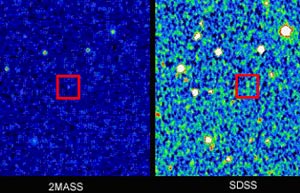This area deals with the fundamental laws and building blocks of nature and how they interact, the properties and the behavior of matter, and research into space and time and their structures.
innovations-report provides in-depth reports and articles on subjects such as astrophysics, laser technologies, nuclear, quantum, particle and solid-state physics, nanotechnologies, planetary research and findings (Mars, Venus) and developments related to the Hubble Telescope.

Researchers attack 100-year-old puzzle, learn how a single layer of particles can pack on the surface of a sphere ARLINGTON, Va. – In a discovery that is likely to impact fields as diverse as medicine and nanomanufacture, researchers have determined how nature arranges charged particles in a thin layer around a sphere. The leap forward in understanding this theoretical problem may help reveal structural chinks in the outer armor of viruses and bacteria (revealing potential drug targets

Using the Hubble Space Telescope, for the first time, astronomers have observed the atmosphere of an extrasolar planet evaporating off into space. Much of this planet may eventually disappear, leaving only a dense core. The planet is a type of extrasolar planet known as a ’hot Jupiter’. These giant, gaseous planets orbit their stars very closely, drawn to them like moths to a flame.
The scorched planet called HD 209458b orbits ‘only’ 7 million kilometres from its yellow Sun-like st

In a major breakthrough for understanding what one of them calls “the most exotic environment in the Universe,” a team of astronomers has discovered that powerful radio bursts in pulsars are generated by structures as small as a beach ball.
“These are by far the smallest objects ever detected outside our solar system,” said Tim Hankins, leader of the research team, which studied the pulsar at the center of the Crab Nebula, more than 6,000 light-years from Earth. “The small size of these regi

Early demo project identifies new brown dwarf
A new approach to finding undiscovered objects buried in immense astronomical databases has produced an early and unexpected payoff: a new instance of a hard-to-find type of star known as a brown dwarf.
Scientists working to create the National Virtual Observatory (NVO), an online portal for astronomical research unifying dozens of large astronomical databases, confirmed discovery of the new brown dwarf recently. The star emerge

An advanced technique for analysing radar images shows tremendous promise for scientists studying forests, agriculture, ice and other terrain types, but experts at a recent ESA workshop cautioned that research work is needed before practical applications can be developed.
More than 120 scientists and researchers from 20 countries gathered recently at ESA’s ESRIN facility in Frascati, Italy, for a three-day workshop to share the latest results on scientific tests and potential applications of

UK astronomers Elizabeth Stanway, Andrew Bunker and Richard McMahon at the Institute of Astronomy, University of Cambridge, England, have used three of the most powerful telescopes in existence to identify some of the farthest galaxies yet seen. But at the same time, they have encountered a cosmic conundrum: it looks as if there were fewer galaxies forming stars at this early stage in the history of the Universe than in the more recent past. Their results, which will be published in the Monthly Notic